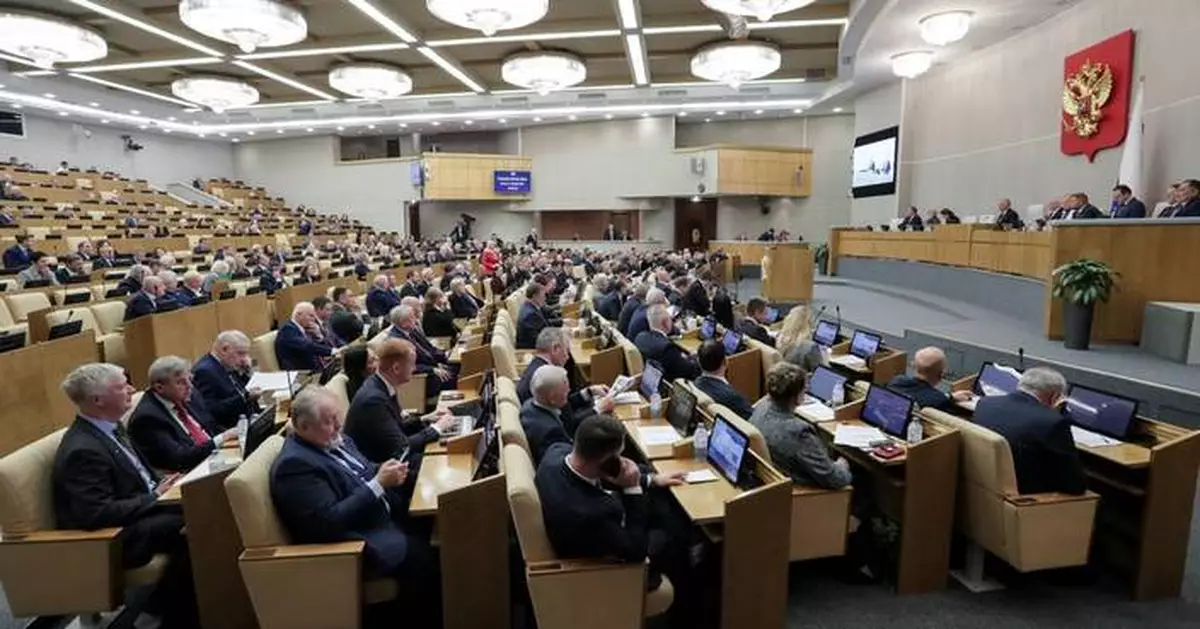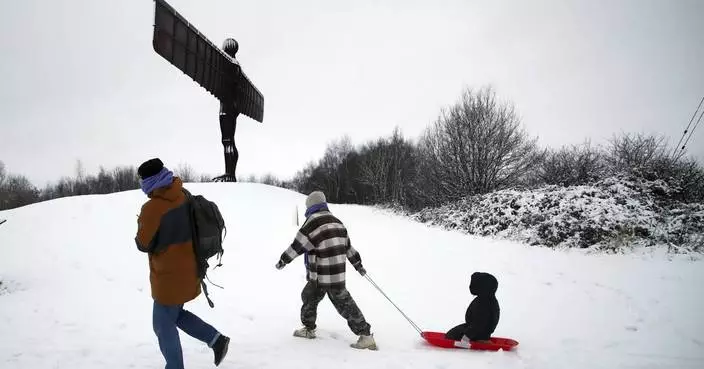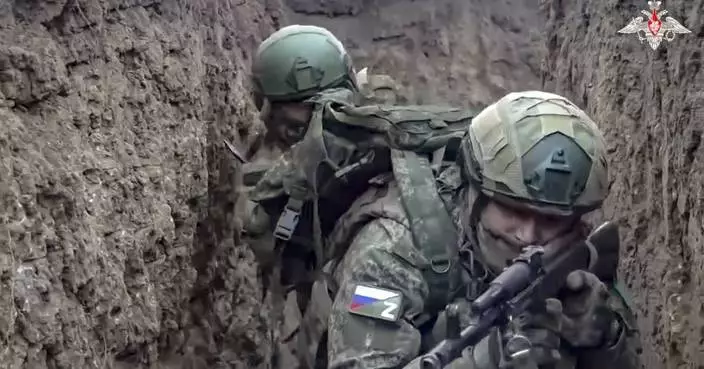MOSCOW (AP) — The lower house of Russia's parliament on Tuesday approved a bill that would set the stage for Moscow to remove the designation of the Taliban in Afghanistan as a terrorist group.
Under the bill passed by the State Duma in the second and third readings, the official terrorist designation of an organization could be suspended by a court. The legislation still needs to be approved by the upper house and signed by President Vladimir Putin to become law.
The Taliban were put on Russia’s list of terrorist organizations in 2003, and any contact with such groups is punishable under Russian law. At the same time, Taliban delegations attended various forums hosted by Moscow.
Russian officials have shrugged off questions about the seeming contradiction by emphasizing the need to engage the Taliban to help stabilize Afghanistan.
The Soviet Union fought a 10-year war in Afghanistan that ended with Moscow withdrawing its troops in 1989. Since then, Moscow has made a diplomatic comeback as a power broker, hosting talks on Afghanistan involving senior representatives of the Taliban and neighboring nations.
There is a deepening divide in the international community on how to deal with the Taliban, who have been in power for three years and face no internal or external opposition. Afghanistan’s rulers have pursued bilateral ties with major regional powers.
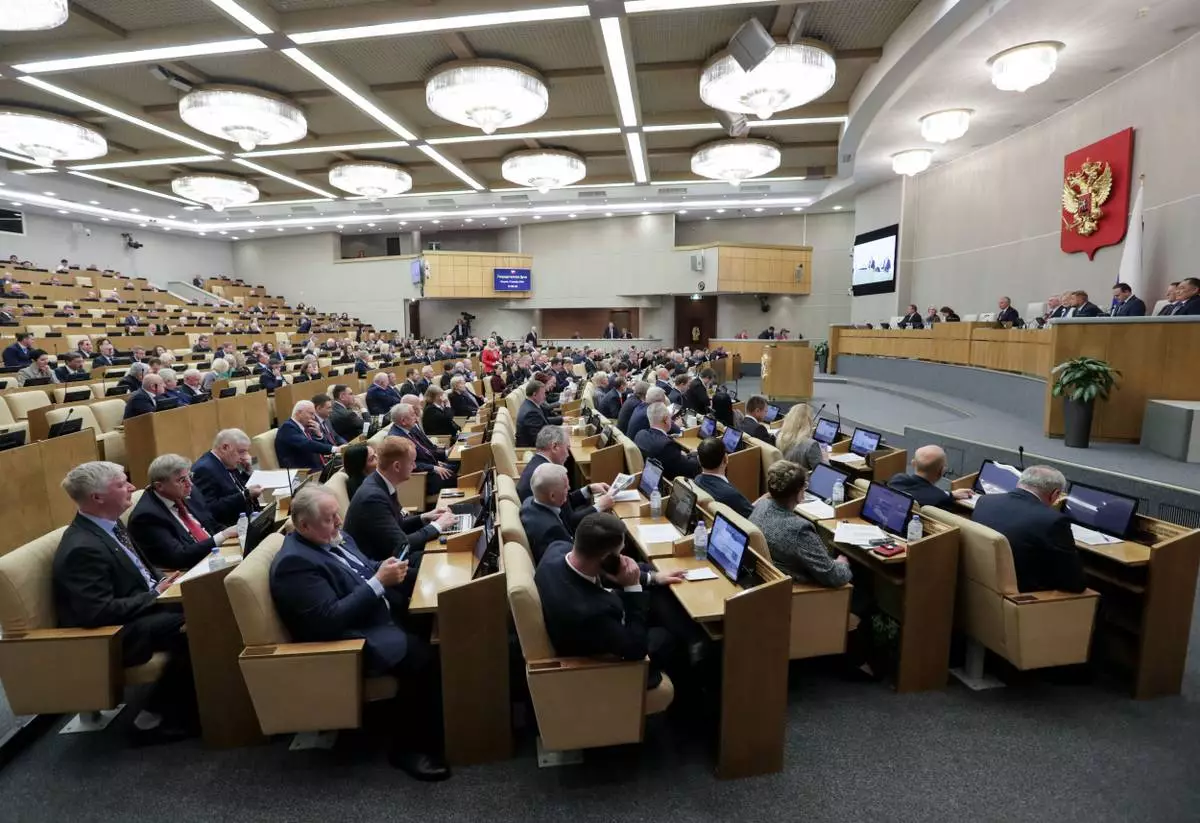
In this photo released by The State Duma, Russian lawmakers attend a plenary session at the State Duma, the Lower House of the Russian Parliament in Moscow, Russia, on Tuesday, Dec. 10, 2024. (The State Duma, the Lower House of the Russian Parliament via AP)
A blast of snow, ice, wind and plunging temperatures stirred up dangerous travel conditions in parts of the central U.S. on Sunday, as a disruptive winter storm brought the possibility of the “heaviest snowfall in a decade” to some areas.
Snow and ice blanketed major roadways in nearly all of Kansas, western Nebraska and parts of Indiana, where the state's National Guard was activated to help any motorists who were stuck. At least 8 inches of snow were expected, particularly north of Interstate 70, as the National Weather Service issued winter storm warnings for Kansas and Missouri, where blizzard conditions were reported. The warning extended to New Jersey for Monday and into early Tuesday.
“For locations in this region that receive the highest snow totals, it may be the heaviest snowfall in at least a decade,” the weather service said early Sunday.
About 63 million people in the U.S. were under some kind of winter weather advisory, watch or warning on Sunday, according to Bob Oravec with the National Weather Service.
The polar vortex of ultra-cold air usually spins around the North Pole. People in the U.S., Europe and Asia experience its intense cold when the vortex escapes and stretches south.
Studies show a fast-warming Arctic is partly to blame for the increasing frequency of the polar vortex extending its icy grip.
In Indiana, snow fully covered portions of Interstate 64, Interstate 69 and U.S. Route 41, prompting Indiana State Police to plead with motorists to stay off the roads as plows worked to keep up with the pace of the precipitation.
“It’s snowing so hard, the snow plows go through and then within a half hour the roadways are completely covered again,” Sgt. Todd Ringle said.
Part of I-70 was closed in central Kansas by Saturday afternoon. Roughly 10 inches (25 centimeters) of snow had fallen in parts of the state, with snow and sleet totals predicted to top 14 inches for parts of Kansas and northern Missouri.
Parts of upstate New York saw 3 feet (0.9 meters) or more of snow from a lake effect event expected to last until late Sunday afternoon.
The storm was then forecast to move into the Ohio Valley and reach the Mid-Atlantic states on Sunday and Monday, with a hard freeze expected as far south as Florida.
The National Weather Service warned that travel in numerous states, including Kansas and Missouri, could be “very difficult to impossible.”
Indiana State Police reported a handful of spinouts and crashes Sunday.
A day earlier a fire truck, several tractor-trailers and passenger vehicles overturned west of Salina. Rigs also jackknifed and went into ditches, state Highway Patrol Trooper Ben Gardner said. He posted a video showing his boots sliding across the highway blacktop like he was on ice skates. He begged people to stay off the roads.
Governors in neighboring Missouri and nearby Arkansas declared states of emergency.
The storms also caused havoc for the nation’s railways, leading to cancelations. Amtrak said in a statement that “adjustments have been made with no alternative transportation being offered” for many rail lines.
More than 20 cancelations were predicted on Sunday and more than 40 were planned for Monday.
The cancelations affected many parts of the country, but the Midwest was hit especially hard. A train between Chicago and New York and several regional trains between Chicago and St. Louis were among those canceled Sunday.
Nearly 200 flights in and out of St. Louis Lambert International Airport were canceled, according to tracking platform FlightAware.
Starting Monday, the eastern two-thirds of the country will experience dangerous, bone-chilling cold and wind chills, forecasters said. Temperatures could be 12 to 25 degrees (7 to 14 degrees Celsius) below normal.
In Chicago on Sunday, temperatures hovered in the teens (minus 7 to 10 Celsius) and around zero in Minneapolis, while dropping to 11 below in International Falls, Minnesota, on the Canadian border.
The Northeastern states are more likely to experience several days of cold following what has mostly been a mild start to winter, said Jon Palmer, a meteorologist with the National Weather Service in Gray, Maine. A plume of cold air coming down from Canada is likely to result in a cold but dry week, he said.
The cold air will likely grip the eastern half of the country as far south as Georgia, Palmer said, with parts of the East Coast experiencing freezing temperatures and lows dipping into the single digits in some areas.
Wind might also pick up as the week gets going, making for potentially dangerous conditions for people exposed to the elements for long periods of time, Palmer said.
The National Weather Service predicted 8 to 12 inches (about 20 to 30 centimeters) of snow for the Annapolis, Maryland, area, with temperatures remaining below freezing throughout the weekend.
In a statement on X, Virginia Gov. Glenn Youngkin declared a state of emergency Friday evening ahead of the storm and encouraged residents to vote before the state's special elections on Tuesday.
Similar declarations were issued in Kansas, Kentucky, Maryland and in central Illinois cities.
“This is the real deal,” meteorologist John Gordon said at a press conference in Louisville, Kentucky. “Are the weather people blowing this out of proportion? No.”
Read more of AP’s climate coverage at http://www.apnews.com/climate-and-environment
Associated Press journalists Julie Walker in New York, Sophia Tareen in Chicago and Summer Ballentine in Columbia, Missouri, contributed. Witte reported from Annapolis, Maryland. Whittle reported from Portland, Maine.
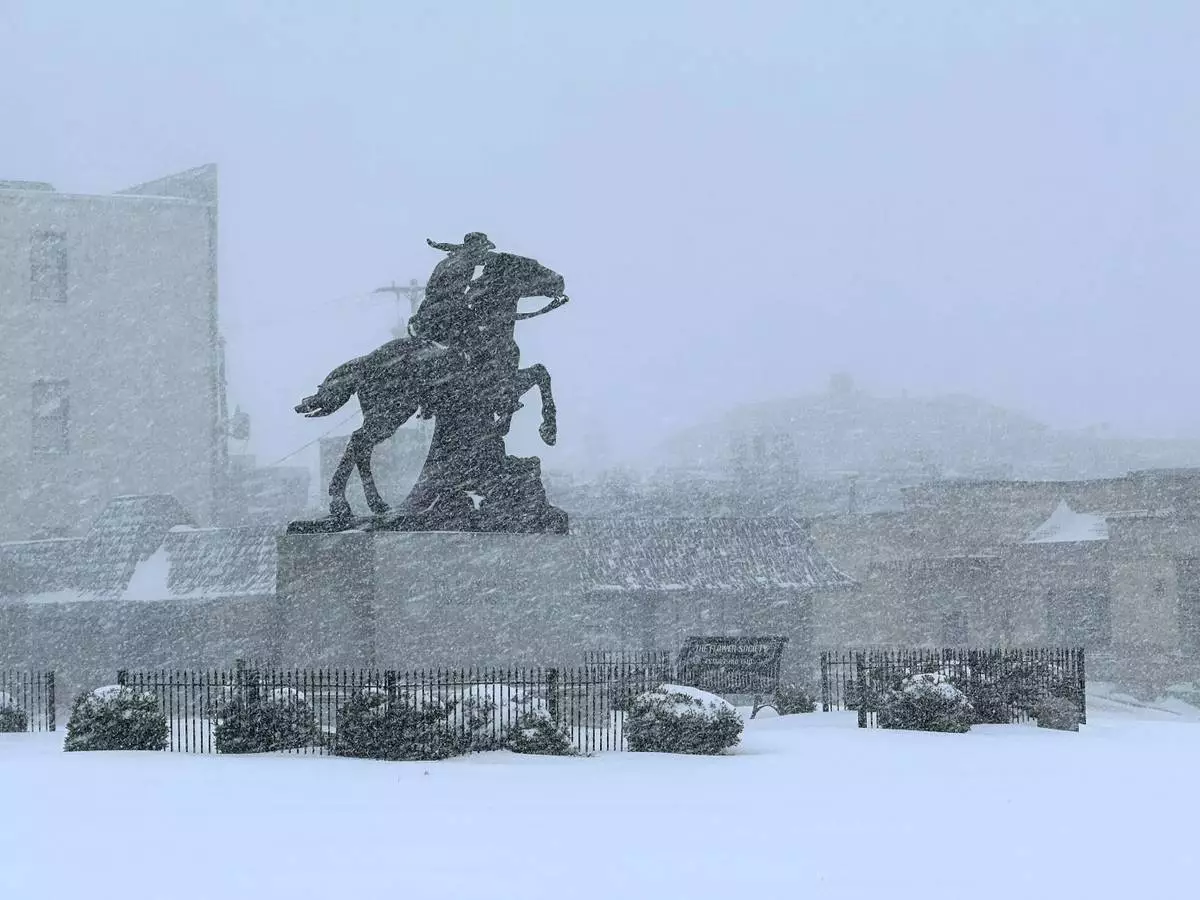
Snow falls in St. Joseph, Mo., Sunday, Jan. 5, 2025. (AP Photo/Nick Ingram)
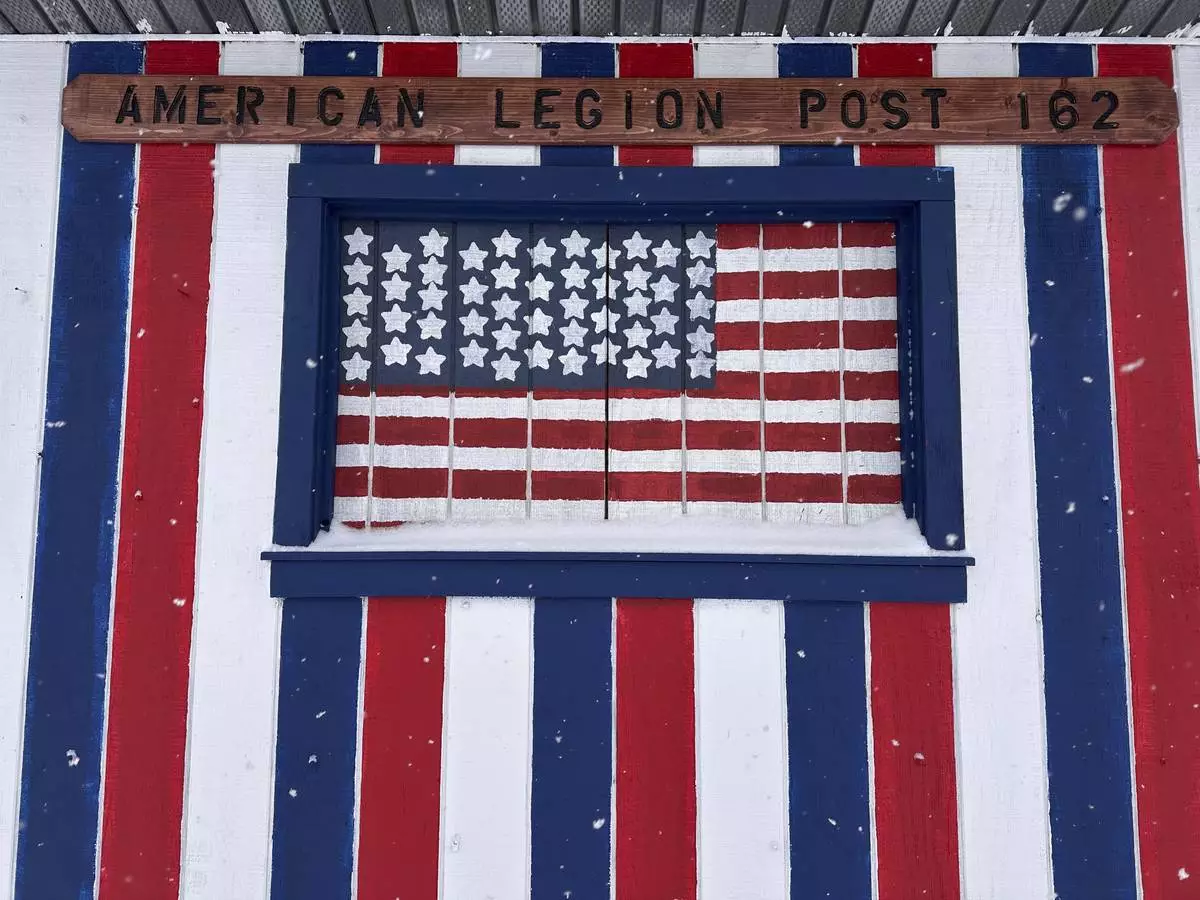
More snow falls near the American Legion Post in Lowville, N.Y., Sunday, Jan. 5, 2025. (AP Photo/Cara Anna)
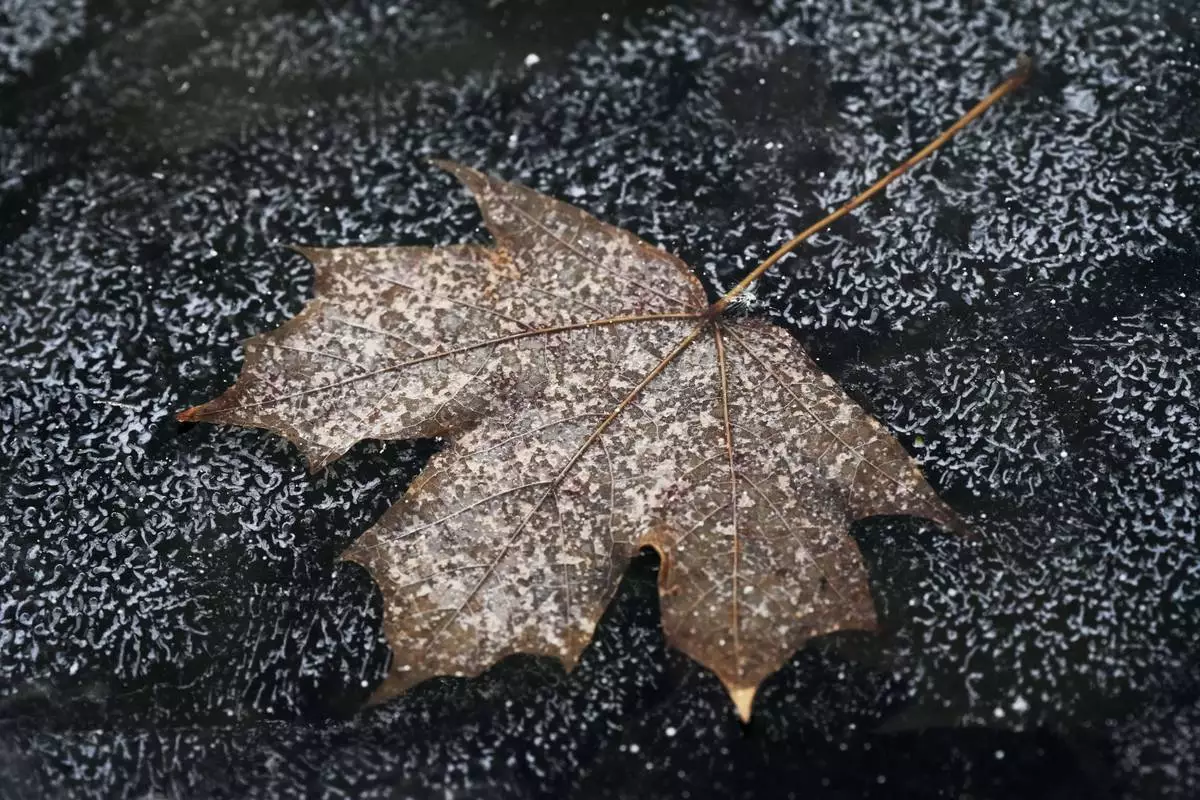
FILE - A leaf is frozen in the ice of a garden pond during cold weather in Buffalo Grove, Ill., Thursday, Dec. 12, 2024. (AP Photo/Nam Y. Huh, File)
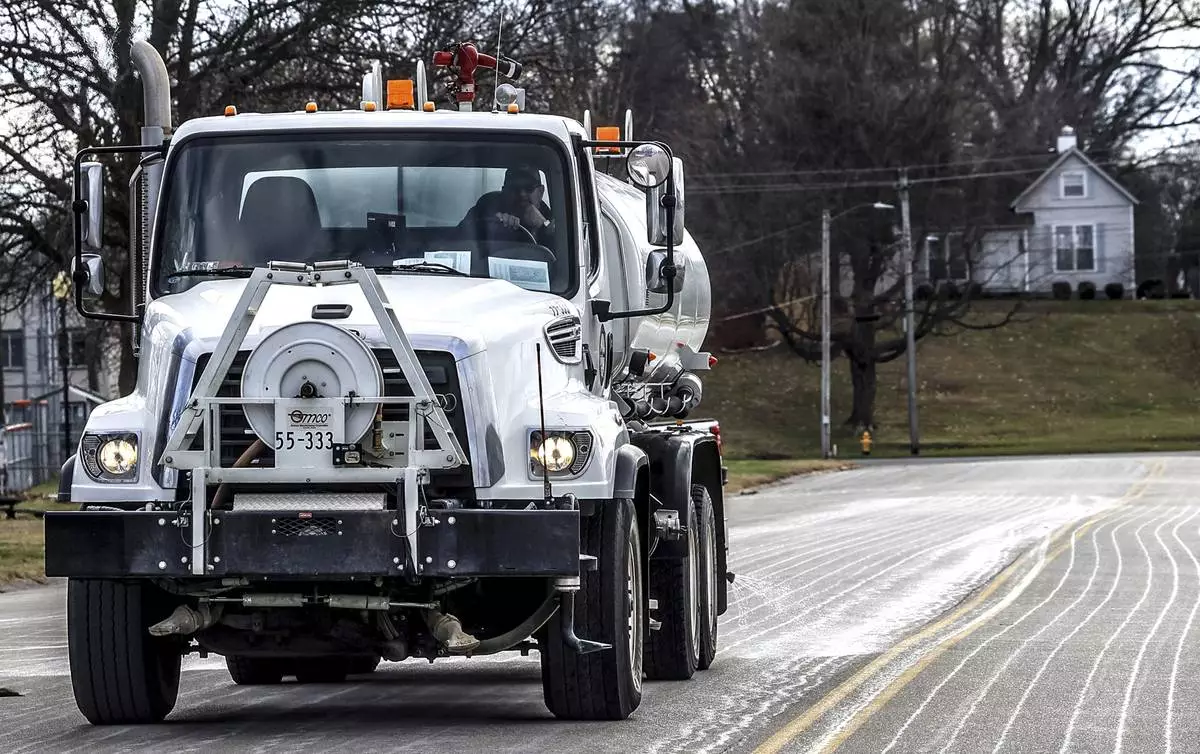
FILE - Steve Beckett with the street department in Owensboro, Ky., sprays a salt brine solution along Hickman Avenue in preparation for predicted snow and ice over the weekend, Friday, Jan. 3, 2025, in Owensboro, Ky. (Greg Eans/The Messenger-Inquirer via AP, File)
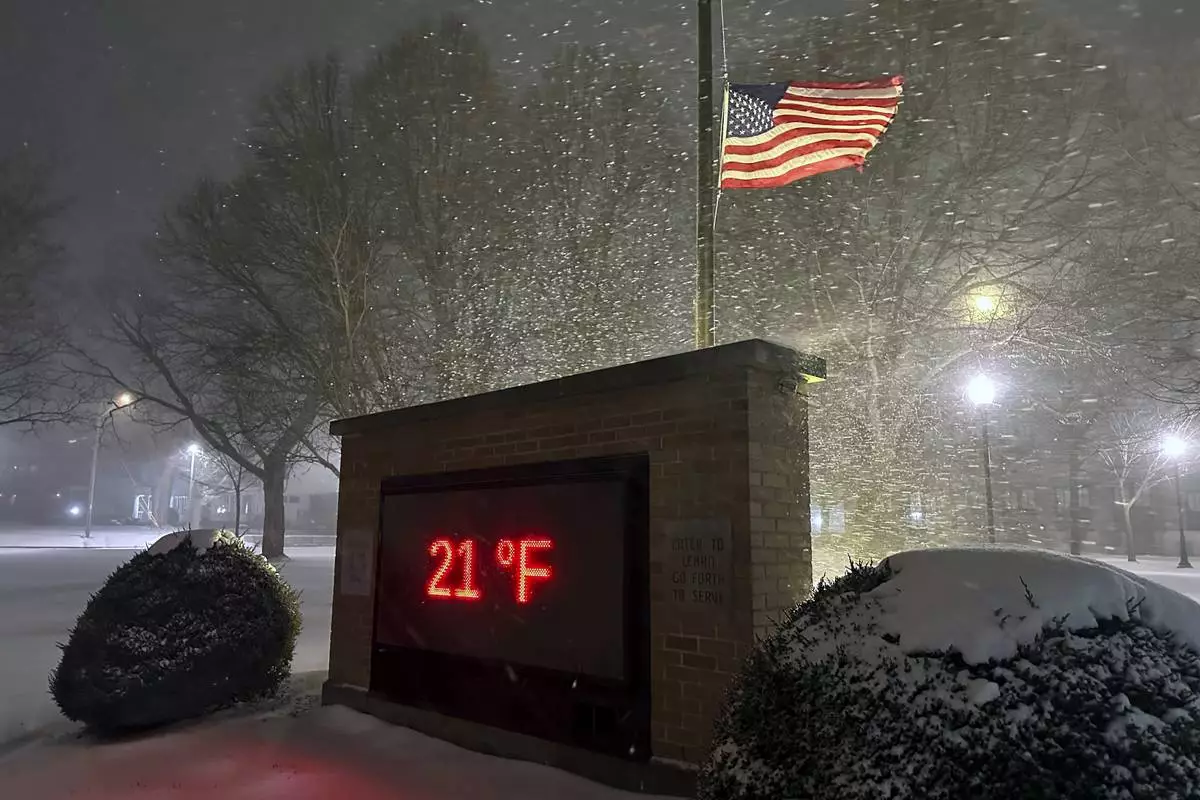
More winter weather blows into Lowville, New York on Saturday, January 4, 2025. (AP Photo/Cara Anna)
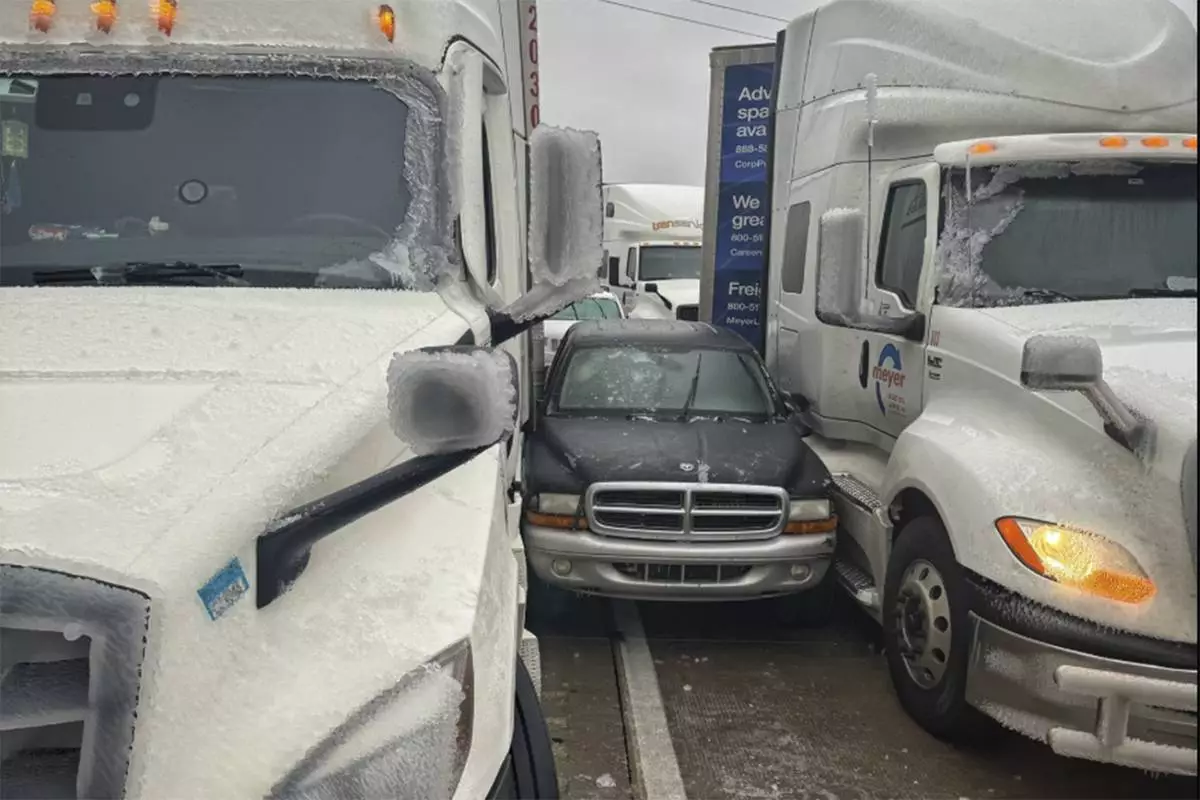
In a photo released by the Kansas Highway Patrol, a car is wedged between two trucks during icy weather Saturday, Jan. 4, 2024, in Salina, Kansas. (Kansas Highway Patrol via AP)
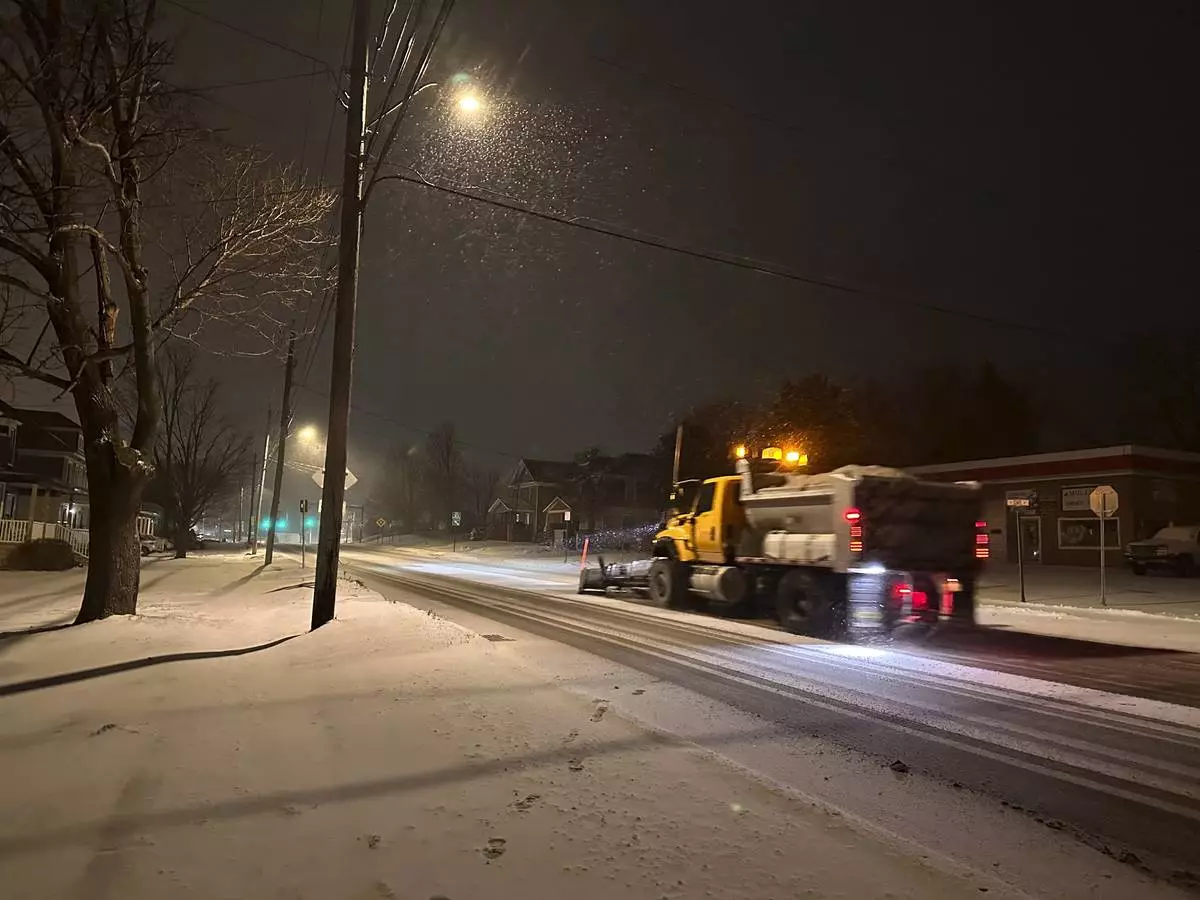
A snowplow passes through Lowville, New York, on Saturday, Jan. 4, 2025. (AP Photo/Cara Anna)



